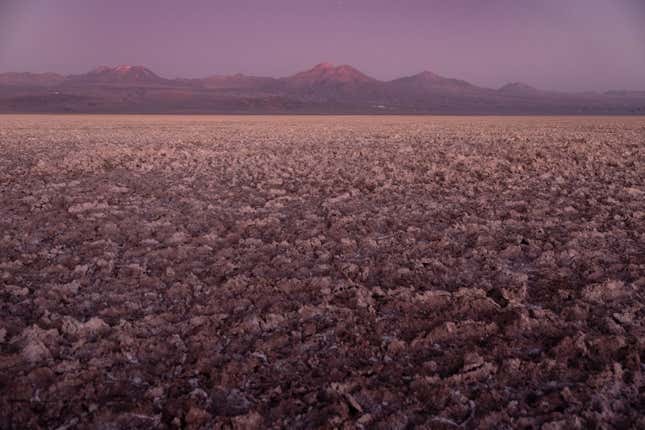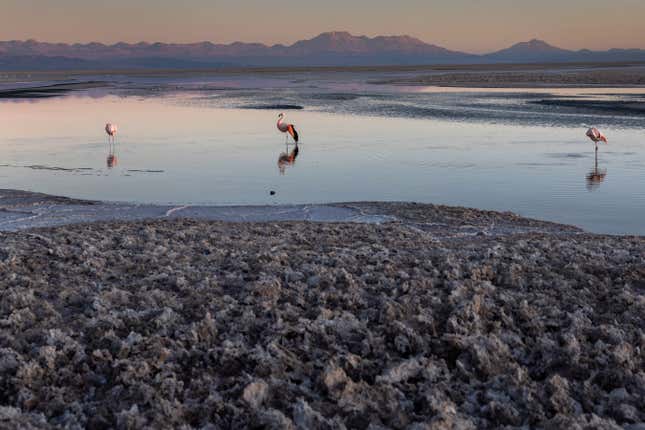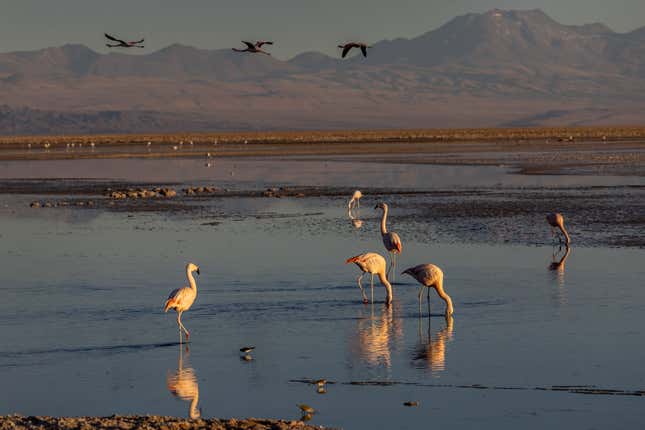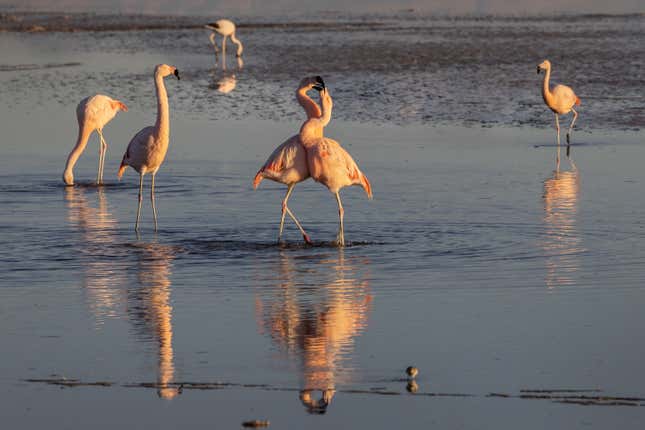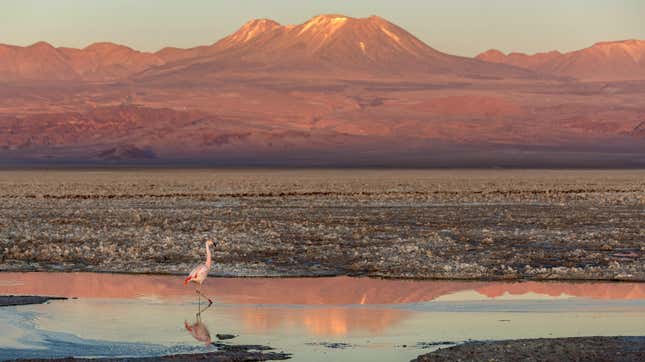
The gorgeous pink flamingos that inhabit one of Chile’s most unique habitats are declining—and demand for electric cars may be partly to blame.
In recent years, populations of the birds living in the salt flats of the Atacama Desert have been on the decline, as global demand for lithium drains the region’s water supply. Here’s how lithium mining is putting these birds at risk.
